A love letter to the world’s most beautiful train station
Even the swishest airports are fairly charmless affairs compared with Europe’s gorgeously grand railway hubs – and Madrid has the best in show, writes Jo Fernandez

Your support helps us to tell the story
From reproductive rights to climate change to Big Tech, The Independent is on the ground when the story is developing. Whether it's investigating the financials of Elon Musk's pro-Trump PAC or producing our latest documentary, 'The A Word', which shines a light on the American women fighting for reproductive rights, we know how important it is to parse out the facts from the messaging.
At such a critical moment in US history, we need reporters on the ground. Your donation allows us to keep sending journalists to speak to both sides of the story.
The Independent is trusted by Americans across the entire political spectrum. And unlike many other quality news outlets, we choose not to lock Americans out of our reporting and analysis with paywalls. We believe quality journalism should be available to everyone, paid for by those who can afford it.
Your support makes all the difference.Madrid Puerta de Atocha: if there is a sweeter spot to wait for your train than this station in central Madrid, I’ve yet to find it. The biggest railway station in Spain was the first to be built in the capital in 1851 – although it’s now actually three stations in one.
As the city’s need for a larger station grew, the rail hub was remodelled in the 1980s and mirrored the urban renewal in the surrounding space. Architect Rafael Moneo (who also revamped the nearby Prado museum) took the greenhouse-style roof as inspiration to create an abundant, 4,000-square-metre tropical garden with more than 7,200 plants growing under the natural light.
The original arched iron and glass-topped train shed, built in 1892, is now a peaceful place for passengers to sit on benches overhung by the leafy fronds of the banana, coconut and breadfruit trees added 100 years later. The wide paths to enter the garden are currently closed, but you can still view this natural beauty from each side from the ground and the higher floors.
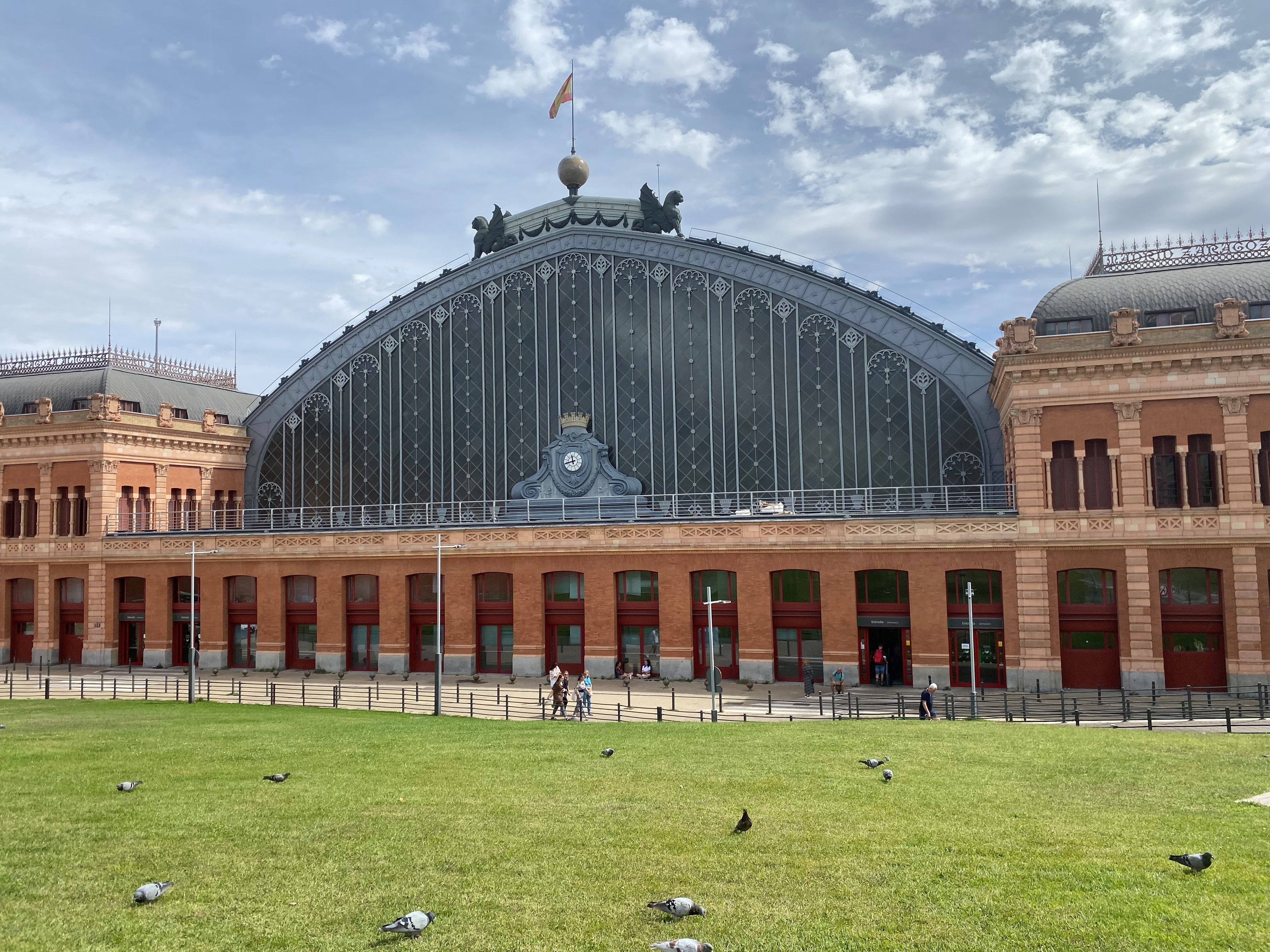
Equally lovely was the turtle pond – removed due to madrileños (Madrid residents) dumping their unwanted turtles and fish here (and since transported to the Jose Peña wildlife centre, Navas del Rey, an hour’s drive from Madrid). But all is not lost – now the area is used as a space for cultural and environmental projects.
Shops and restaurants lining the space include a branch of Enrique Tomás, a pretty good chiringuito-style deli-slash-tapas bar dishing out walnut-topped goat’s cheese salads in full view of the garden. You can also pick up a packet of jamon ibérico or a pack of cured sheep’s cheese to stash in your case and beat the typical British railway user’s soggy sandwich.
Built in the late Eighties and early Nineties, the second element, Puerta de Atocha, was added as the adjoining hub for high-speed AVE trains and the third, Atocha-Cercanías, for commuter lines and medium and long-distance trains.
The original arched iron and glass-topped train shed, built in 1892, is now a peaceful place for passengers to sit on benches overhung by the leafy fronds of the banana, coconut and breadfruit trees
Here also is the memorial to the victims of the 2004 terrorist bombing, when 193 people died. The large glass cylinder in front of the station reveals little from the outside – but inside, hundreds of condolence messages line the 12m-high dome, designed to highlight different ones at different times of the day as the sun moves around. At night, it appears as if candles flicker inside it.
Yes, there are numerous beautiful train stations around the world, but for my money Atocha tops the lot – an unparalleled conversion of a city centre station with a surprisingly paradisiacal element, where one almost hopes for a delay to enjoy the space a little longer.
Four more European stations worth seeing
St Pancras International station
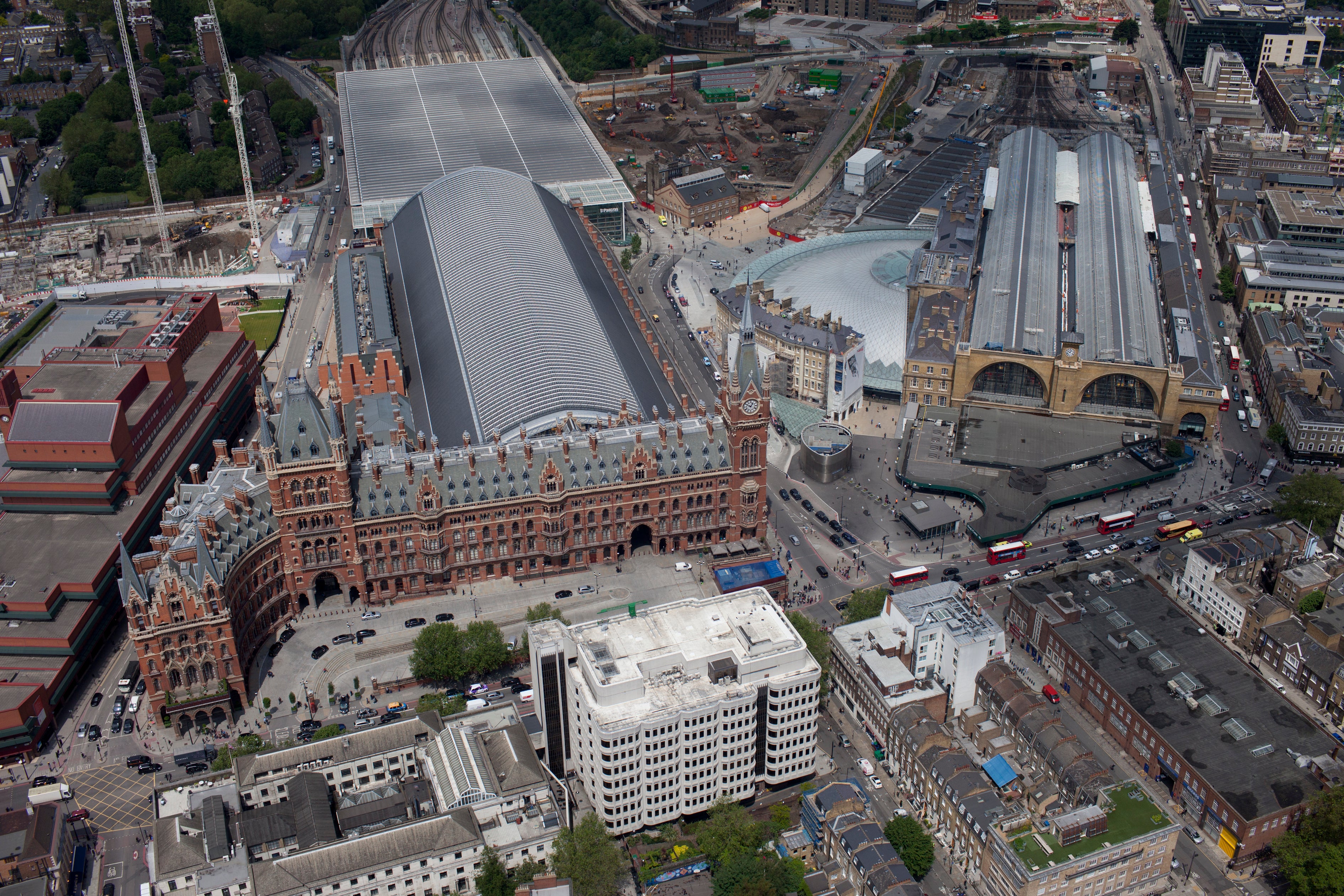
More than just a place to hop onto a high-speed train, St Pancras is a historic Gothic grade I-listed masterpiece first constructed in 1868. Travellers with a healthy budget can stay among the gilded ceilings and grandeur of the St Pancras Renaissance Hotel, shop at brands from Fortnum & Mason to Boots, and drink posh fizz at Europe’s longest champagne bar. Free charms include members of the public bashing out tunes on the two public pianos in the lower ground floor arcade. Last, but not least, since the Eurostar first arrived here in 2007 – the reason behind the brilliant restoration – the station connects London to Paris, Brussels, Lille, Amsterdam and Rotterdam.
Liège-Guillemins railway station
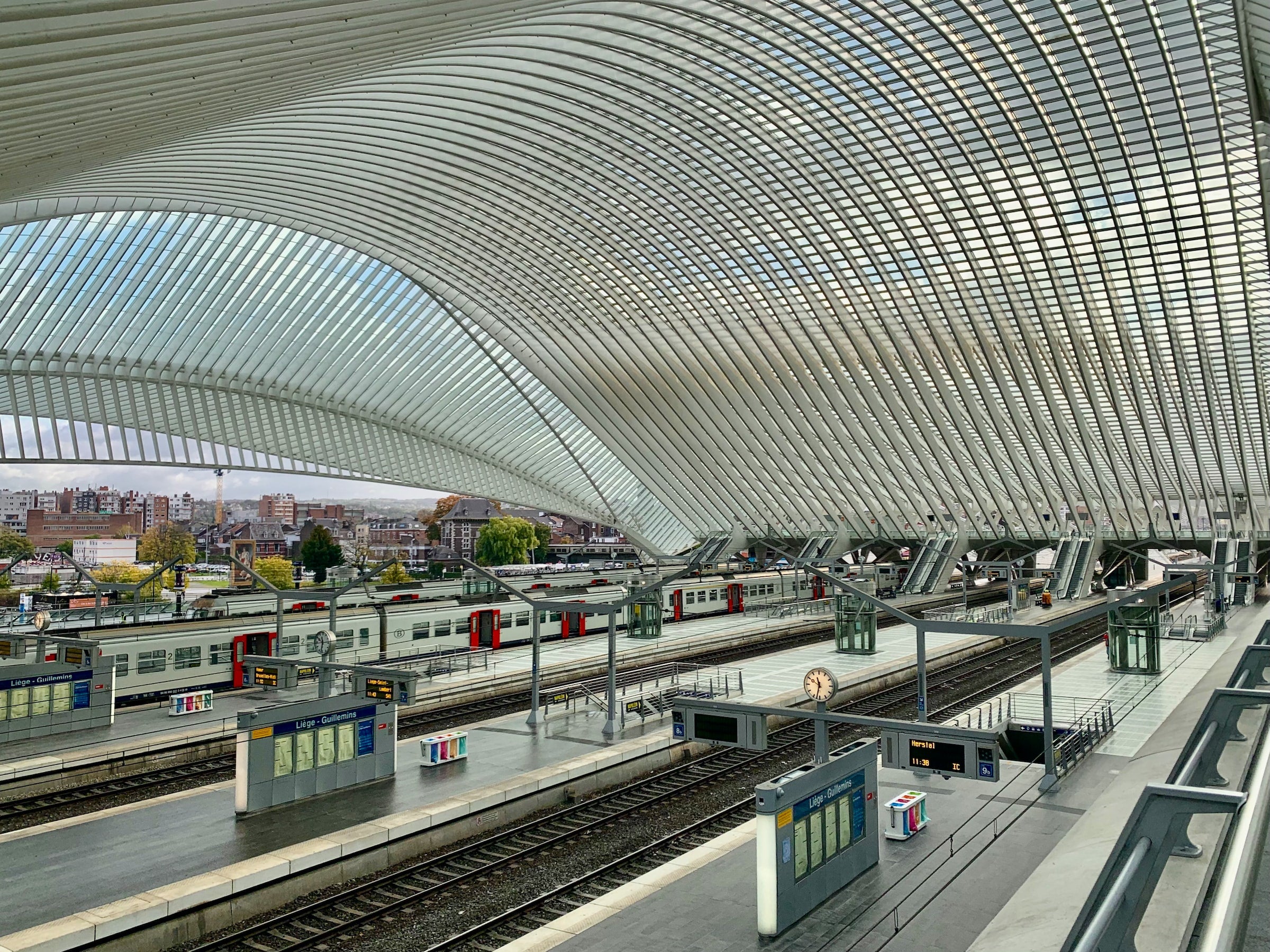
The wave-like vaulted glass, steel and white concrete canopy defines the artfully designed Liège rail station by Santiago Calatrava, making catching services for Belgium’s high-speed rail network more pleasure than chore. Built to replace the 1950s building, which in turn replaced the previous geaux arts structure to accommodate the introduction of high-speed trains, the 2009-built station links two areas of the city previously divided by railway tracks. Despite the sturdy materials, there’s a graceful fluidity that mirrors the movement of busy station life with no formal entrance, creating a seamless, light-filled space. Look out for it in films such as Ang Lee’s Gemini Man. Calatrava already had form for designing stellar stations, having masterminded Oriente Station in Lisbon.
Lisbon Oriente Station
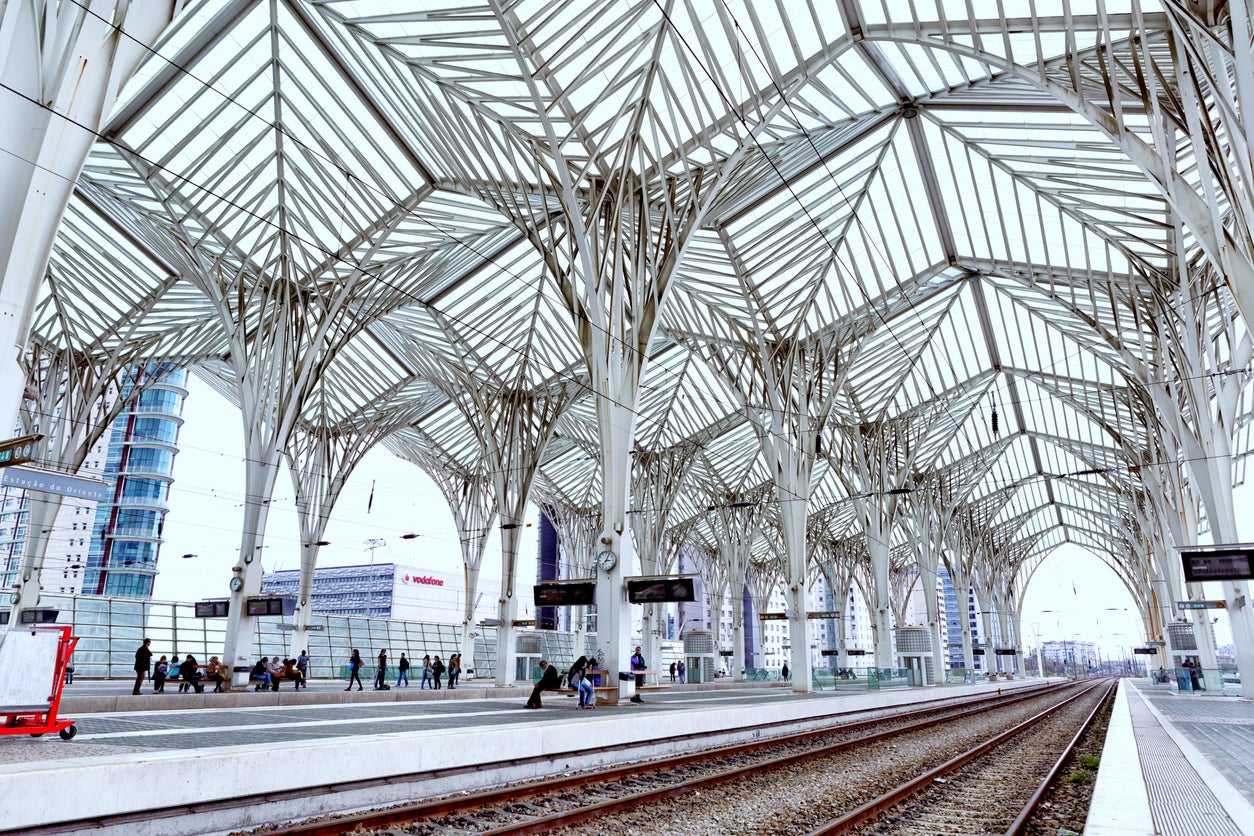
Famous for using nature as an inspiration for his work, it’s clear that Calatrava is a dab hand with glass and steel. From these prime materials, Calatrava created a skeletal exterior and platforms covered by a symmetrical forest that are exceptional from any angle in this Lisbon landmark. The grand Oriente station is part of the Parque das Nações waterfront development, which transformed the whole Olivais district when it was created to bring visitors to the World’s Fair in 1998.
As well as standing out on Lisbon’s skyline and acting as one of the city’s main railway hubs, the station complex houses a bus terminal and the Vasco da Gama shopping centre. It also is home to the Oriente metro station, where giant tiled murals designed by talented local and international artists keep things artistic as you wait for your train.
Milano Centrale
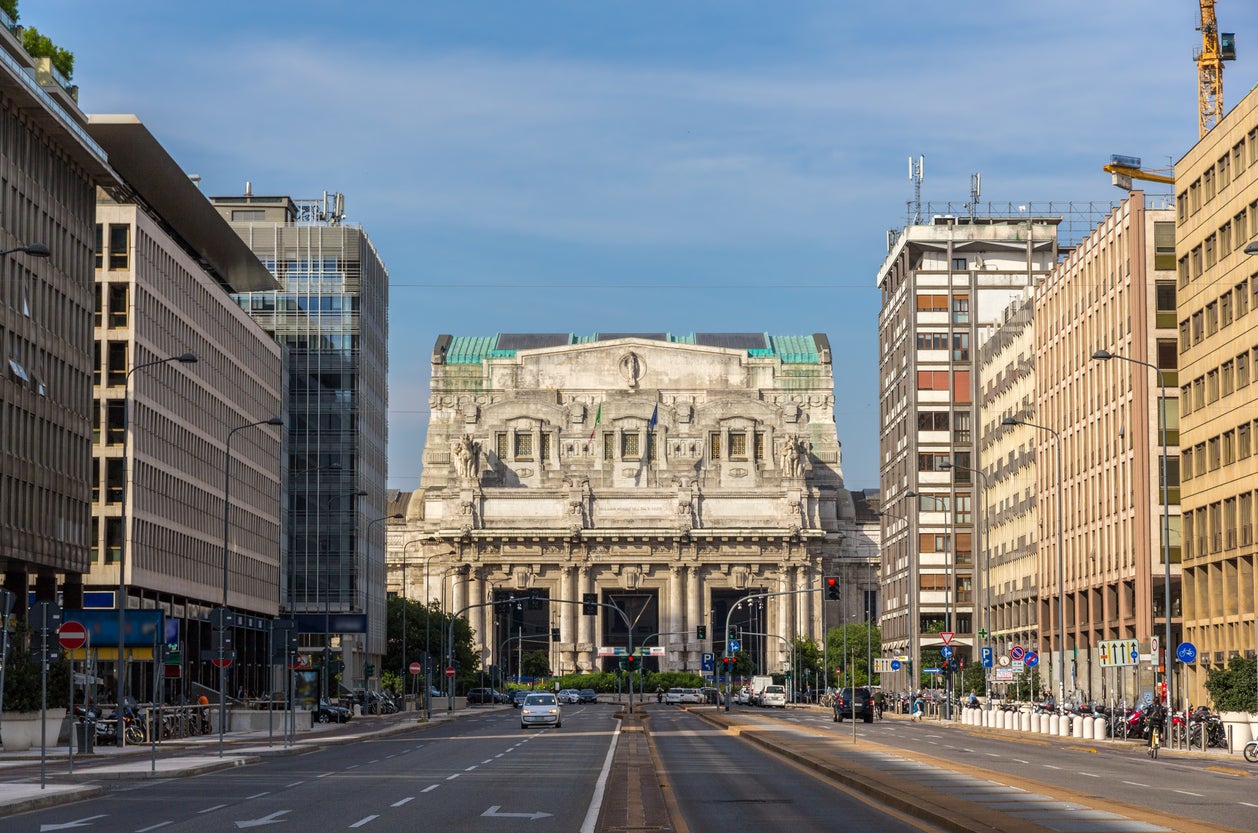
This fast-paced metropolis in the north of Italy is an attraction in its own right. Built in the early 1930s to flex Benito Mussolini’s Fascist muscles, Milano Centrale is the second-largest station in Italy. The arching steel and glass train sheds are lovely enough, but there’s also the imposing entrance on the Piazza Duca d’Aosta to ogle at, a showstopper of chunky white columns and delicate art deco details. This being Milan, you can shop at the gorgeous Galleria Commerciale and sip an espresso at one of the many cafes. Some travellers will want to see the now-defaced mural of Mussolini on platform 21.
Join our commenting forum
Join thought-provoking conversations, follow other Independent readers and see their replies
Comments